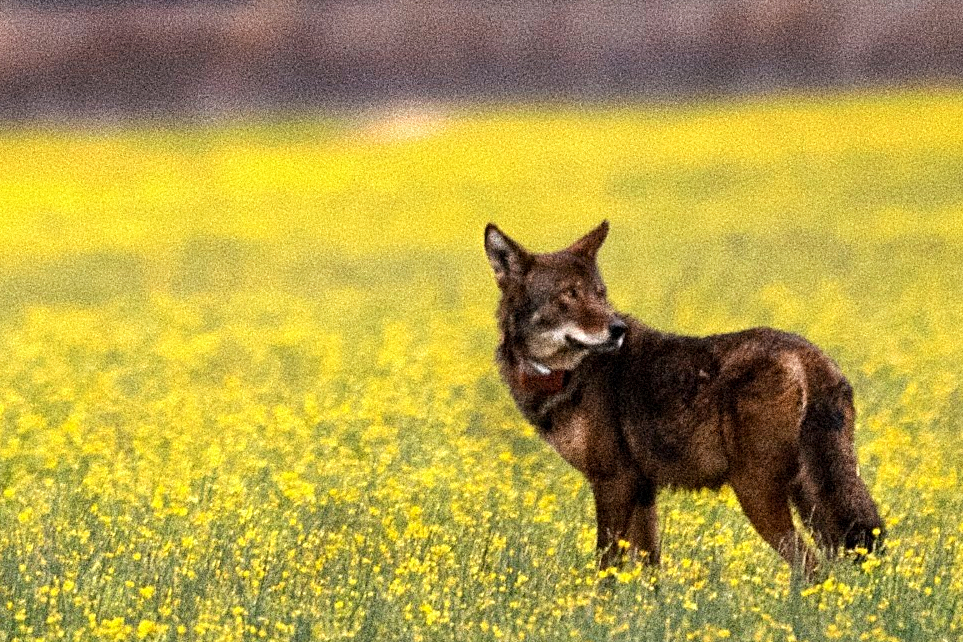Across Croatan and Albemarle Sounds from the Outer Banks lies Alligator River National Wildlife Refuge. A huge sprawling wildlife refuge, it covers 238 square miles of area and is home to a remarkably diverse range of wildlife.
It is home to one of the largest black bear populations in North America. The river that gives the refuge its name is the northernmost reach of the American alligator. The creeks and marsh are home to beaver and muskrats. Songbirds and migratory waterfowl call Alligator River home.
And at to that list, the red wolf. The wolf was originally native to the area, but intensive farming and predation control reduced their number to the point that they are now considered critically endangered.
Often thought of as a subspecies of gray wolves, red wolves are smaller and their fur has a distinctly brown to red coloration.
Actually USFW has released red wolves at ARNWR in the past. Although a specific count is difficult to achieve, the current number in the reserve seems to be about 50. When USFW first began releasing the wolves at Alligator River, it was believed there were no red wolves left in the wild, and the release animals came from captive breeding.
At one time the red wolf was common from Virginia to Texas and the release at ARNWR will place the animals in the heart of their natural habitat.
The latest effort USFW includes extensive outreach to stakeholders before the next release of the wolves. In recent years, some evidence of remnant wild populations have been noted in Louisiana and Texas.
During the summer and into fall, ARNWR sponsors a “wolf howling” during full moons. The guide takes a tour group into a relatively deserted area of the refuge, howls and the answering howls from unseen wolves is sure to be a memory anyone would remember.
The wild side of the Outer Banks is truly worth exploring. Begin your exploration from a Brindley Beach Vacations home.

